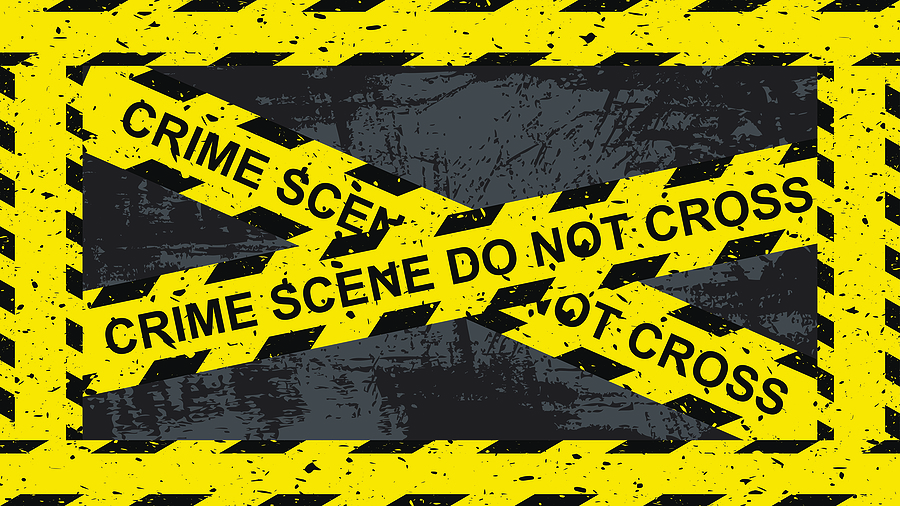This is an article about writing for the purpose of extracting money from people who habituate the Internet. If that offends your delicate sensibilities, then you might as well stop reading right now.
On the other hand, if you’re looking for ways to use the Internet as a powerful client-attraction magnet that fills your business with cold, hard cash, then listen up…
Horse Puckey and Hocus Pocus

There’s all kinds of B.S. out there about how “different” a media the Internet is now… complete with hair-brained ways to regulate and hamstring advertisers and thus extend the dumb, money flushing tendrils of brand advertising into this exciting new realm.
Don’t fall for them. Just as with any other medium of mass communication, marketing success online (defined very narrowly here as “selling more stuff”), boils down to 3 simple principles …
- A powerful offer …
- Communicated to a starving crowd that’s proven it wants your stuff and can afford to pay for it … and …
- Copy that effectively processes those prospects through the Attention, Interest, Desire, Action continuum at point of impact.
That’s it! The rest is Madison Avenue foo foo dust.
OK, there are some differences between the Internet and traditional media. Here’s one that matters …
Online, the cost per word is drastically lower than any other media known to man. On your website, and in many of the places you communicate with your target market (particularly on social media), you’ve got virtually unlimited space to tell your story. What does this mean?
It means YOU, as a marketer can afford to put MORE copy into the marketplace. More emails, more ads, more landing pages, webinars, lead gen magnets, videos, etc.
And as anyone who’s actually lived by the results of their advertising knows, (all things being equal), the more you tell, the more you sell. Glitzy image ads with clever sounding 5 to 10 word slogans posing as copy don’t sell squat.
So the rest of this article is aptly dedicated to helping you write more great web copy FASTER… so you can flood the Internet with a tireless army of relentless salesmen-in-print… dramatically increasing the profitability of your business.
5 Zen Master Secrets for Increased Copy Output
Copy, like speech, is a function of vocabulary, but I’m not just talking about individual words here …
Your copy vocabulary is your subconscious assimilation of selling words, phrases, concepts, and structures. The strength of that vocabulary … and therefore your ability to write productive copy quickly … is the result of the depth of your assimilation of the words, phrases, concepts and structures contained in the copy you’ve studied.
You see, we humans are like chimpanzees. We learn by imitation. And when we assimilate and internalize large quantities of information at a cellular level, it’s just natural for us to begin combining the bits and pieces in new ways when we express ourselves. The end result is an increased ability to write copy …
I’ve assembled a few strategies here for you to use that I’ve found to have a profound influence on writing ability. They’re very powerful. Use them only on well-known, long–standing controls (ads that mailed or appeared profitably in print for extended periods). Of course, your go-to source is The Steal These Response-Exploding Secrets Swipe-File.
Let’s begin …
Examine Controls with the Zeal of a Forensic Scientist

Read at least one piece of world-beating copy daily, but don’t just read it. Examine it. Put it under the microscope. Ask yourself questions as you read each word, sentence, paragraph and section.
What was this master direct response copywriter trying to achieve in each element of the copy? Why did he write what he did? What was the logic behind the order of the various elements? How did he keep you engaged? What was it about the copy that made it believable? How did he reduce the complex to the easily understood? And so forth …
Gradually over time, as you engage in this practice regularly, you will begin to notice recurring underlying patterns of thought that various copywriters have expressed in their own unique style. These common structures will gradually become part of your own vocabulary, and you will have a rich variety of devices that you can call on in your daily writing.
The more ways you can interact with the copy, the more deeply you will internalize it. The following exercise will tie what you learn together, and help you to access it more spontaneously in your daily writing …
Make Counterfeit Copies

Don’t ask for an explanation for why this works. It just does. Simply copying out controls in your own handwriting, or on your keyboard, accelerates your development dramatically. Here’s how to make the most of it …
As you are copying out the controls, make a mental note of how much of the copy you are storing in short term memory each time you turn your attention from the original to the version you’re typing. At first it may be just a few words at a time. Make a conscious effort to grab larger and larger chunks of copy each time you transition.
Stretch yourself. Try to take on an entire paragraph or more with practice. Make mental images of the copy, as well as trying to remember the actual words themselves. If you can’t remember the chunk you are working on verbatim, rewrite it, and then compare what you wrote to the original.
When you feel yourself getting the hang of this, use this next exercise to cement the most powerful copy devices even further into your psyche …
Memorize Headlines, Leads, Bullets, Entire Controls
In the previous exercise you were stretching your short-term memory. By doing so, you are feeding your subconscious with a rich vocabulary that will begin to flow spontaneously from your fingertips, as if by magic.
To take this phenomenon to the next level, it’s time to drill the most powerful elements of the copy you’re studying into long-term memory as well.
You have an extraordinary memory capacity. Your entire life experience is perfectly recorded in your memory. Actually a great deal of what you record finds its way into your thoughts, conversations, and copy without your awareness.
What you want to do is intensify this phenomenon by synthesizing world-class copy elements into organized structures within your brain, so they can be effectively recalled in detail at will.
There are some specific tricks you can use to do this that I don’t have time to explain in detail here, but I’ll give you a couple of tips that will help you.
The memory and recall process is facilitated by synthesizing things we wish to remember with things that are already well known to us by associating, relating, and interrelating them with each other.
Since the mind thinks in pictures, try using your imagination to break the copy down into bizarre images through the filter of your own personal experience. Then sequence those images by relating them to physical objects you encounter along a well known route from point A to point B on a local roadway, or some other “path” that you’re intimately familiar with.
Visualize Your Intentions
The human mind is a goal-seeking device. When writing copy, or learning to write copy, the whole process becomes emotionally charged and exciting when you remain focused on the intended outcomes.
When writing headlines and openings for example, try to see your prospect encountering your copy and NOT being able to pass it over.
Picture them becoming increasingly enthralled by the promises you make in the first twenty or thirty seconds.
Visualize your prospects getting more and more excited about having what you’re selling as they approach your offer and call to action.
See them physically taking credit-card-in-hand and ordering, and imagine the digits piling up in your merchant account.
Now go ahead.
Spend the money.
Use whatever visualizations get YOU personally most involved and excited in the whole process. This will serve to stimulate your brain, giving you greater access to the vocabulary you’ve been building up.
Wake Up Each Morning With Your Copy Half Written

All of these techniques leverage the subconscious mind to accelerate your copywriting. They dramatically expand upon the amount of input your subconscious mind has at its disposal. This last one quickly sharpens your ability to bring that fodder into the copywriting cannon when you need it.
As you drift off to sleep each night, give your subconscious mind specific instructions. The more specific, the better.
For example, say to yourself, “Hey Sub, tomorrow I’m going to start working on a new webinar. When I wake up, I want killer names for each payload element that deliver unstoppable intrigue.”
Be sure to keep a pad and pen on the night table beside your bed as well. Several times I’ve bolted upright in the middle of the night (of course my wife thinks I’m nuts) with a killer headline or concept for a campaign that was so powerful I thought I would remember it for the rest of my life. In the morning it was gone. Now I keep a pen and paper handy.
When you wake up in the morning, start writing immediately, before even cleaning the sleep out of your eyes. Just roll out of bed and start writing.
Your subconscious has been sifting and sorting all of the data you’ve been collecting and thinking about the day before. Just after you wake up, those connections are still fresh and available to you. You are at least 4 times more creative at that point than you will be later in the day.
Take advantage of those golden hours.
OK that’s it for today …
Grab these Zen master secrets with both hands and put them to work. I guarantee you’ll notice a difference …
Before long you’ll find yourself writing more copy, faster, and supercharging the pulling power of your entire sales funnel.
Leave a Reply